Agrivoltaics development in Italy: The current challenge
Agrivoltaics is a system that evidently increases land use efficiency by simultaneously enabling main agricultural crop production and secondary solar PV power generation on the same cropland area, while optimally utilizing the techno-ecological and techno-economic synergy effects of both production systems. It is the current main challenge of PV development in Italy when dealing with utility-scale projects.
Over the past few years, the development of utility-scale photovoltaic projects in Italy has been focusing on rural areas and related agricultural land. A shift from standard photovoltaic to agrivoltaic plants was noticed and the last ones are currently representing over the 70% of the Italian utility-scale development pipeline. Nevertheless, agrivoltaics is a very broad concept that was interpreted in many ways so far: putting together research concept and development practice is the current challenge of the photovoltaic industry.
The first agrivoltaics system was conceived by the Fraunhofer Institute (Source [1]) as a fixed structure bearing portrait-oriented modules at 4-metres height approximately. The main goal was enabling the coexistence of crops and energy production on the same land plot. Nowadays many agrivoltaics systems (both R&D systems and commercial products) are consistent with the original idea. The significant elevation of modules allows a relative constant irradiance to the ground and possible passage of agricultural machinery over almost 100% of the plot: both elements can reach a desired agricultural efficiency on the same plot where photovoltaic modules are also installed.

Figure 1 - Example of increase in the overall productivity of a land plot (Source [2]).
Fixed or tracking agrivoltaics?
Nevertheless, the cost of steel and the practice of Operation & Maintenance should not be ignored: elevated structures usually mean higher CAPEX and higher OPEX than standard structures. For these reasons, the last ones are usually preferred in Italian utility-scale agrivoltaic development. Among standard structures, single-axis N-S oriented 1P and 2P trackers are the ones able to contain prices and increase production compared to fixed systems: single-axis trackers are structures with several purlins fixed on a torque tube along an Est-West direction and modules anchored on them to rotate along the sun path in a single (1P) or in a double (2P) row along the torque tube.
1P or 2P trackers?
During the preliminary design phase of agrivoltaics projects the choice among 1P and 2P trackers depends on several factors: occupation rate if structures on the land plot, strength of the wind, selection of the agrivoltaics specialization, CAPEX, etc.
In synthesis, a key parameter impacting on the difference among 1P and 2P project layouts is pitch, meaning the distance among poles of two successive tracker rows along the E-W direction. Typical 1P pitches range roughly between 4.5 and 5.5 metres, whereas typical 2P pitches range roughly between 8.5 and 10.5 metres. A lower pitch with reasonably high trackers means having a stable irradiation along the pitch direction together with higher shading, whereas a higher pitch means having a lot more land available for crop cultivation or cattle grazing together with higher irradiation in the inter-row space.
Nevertheless, it is important to note that in 2022 the Italian Ministry for Environment and Energy Security (MASE) released specific guidelines for agrivoltaics projects, among which also specific geometrical constraints about the occupation rate of the plant over the land projects are provided. Playing with project pitch is therefore a non-trivial argument in agrivoltaics.
Which crop should I choose?
Simulation of the irradiation along the pitch direction (Figure 2) is then crucial for a proper selection of the crops to be cultivated in the agrivoltaics project. As a matter of fact, some crops are keener on higher amounts of light, whereas other crops grow better in shaded areas. The correct growth of the selected crop is in fact significant in making the associated business model coherent also from an agricultural point of view.

Figure 2 - Example of irradiation simulation along pitch direction (Source [3]).
Agrivoltaics is a very complex topic, and we just provided an overview on some of the key issues that PV developers are facing. Establishing a high-level technical expertise in all the above-mentioned elements is thus fundamental to correctly design an agrivoltaic utility-scale project and make it run during its lifetime.
At Vector Renewables we provide a team of highly qualified professionals offering integral technical advisory services, adapted to the specific needs of each project. If you are interested in exploring the possibilities of agrivoltaics for your agricultural farm operation or renewable energy project, you can contact us through our web form.
References
- Goetzberger, A.; Zastrow, A. (1 January 1982). "On the Coexistence of Solar-Energy Conversion and Plant Cultivation". International Journal of Solar Energy. 1 (1): 55–69
- Metsolar What is Agrivoltaics? How Can Solar Energy and Agriculture Work Together? Available online:https://metsolar.eu/blog/what-is-agrivoltaics-how-can-solar-energy-and-agriculture-work-together/
- Vector Renewables Italy, Technical Advisory department.
When you subscribe to the blog, we will send you an e-mail when there are new updates on the site so you wouldn't miss them.

